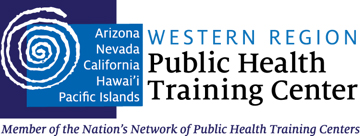It is a new dawn for public health in the United States. As you may know, the public health system is currently undergoing a very rapid change in response to the Affordable Care Act (ACA) and the epidemiological transition occurring in our Nation. At the same time, the public health workforce is aging and an expected 250,000 positions will need to be replaced by 2020.
Schools and programs of public health are working hard to create the educational programs that are needed to prepare this future public health workforce. To assist in this effort, the Public Health Foundation has now codified competencies that are needed to have an effective public health workforce that performs the three core functions and 10 essential public health services to communities. These competencies comprise of eight domains and guide the development of appropriate continuing education programs for the public health workforce so they can adapt to new changes in the public health care system.
In response to these significant changes, HRSA has funded a National Network of Public Health Training Centers (NNPHTC). The NNPHTC consists of 10 regional public health training centers based on HRSA regions and a National Coordinating Center. The University of Arizona Mel and Enid Zuckerman College of Public Health is the home for the public health workforce in HRSA Region 9.

The WRPHTC is a consortium of local performance sites (LPS) located at the University of Nevada, Reno, School of Community Health Sciences; University of Hawai’i, Manoa, Department of Public Health Sciences; Pacific Island Health Officers Association; and University of California, San Francisco, California Area Health Education Center Program. The WRPHTC also works closely with each state’s AHEC and State Office of Rural Health.
Our sites work together to provide training needs assessments for each area and conduct face-to-face and online trainings across the region and nation. Furthermore, the WRPHTC is the training center that has been identified to provide expertise on nutrition, physical activity and obesity to the national network of PHTCs. Our vision is to have a strong collaborative public health network and workforce that collectively works towards the development of healthy communities.
Recognizing the shared interest of the WRPHTC and the Southwest Telemedicine Resource Center (SWTRC), we have established a partnership to better focus on providing continuing education on nutrition, physical activity and nutrition to the future and existing workforce in health departments, federally qualified health centers and critical access hospitals.
Our first program will be a series of webinars on “Weight Loss and Weight Management: Current Theories and Best Practices.” This four session, interactive webinar series brings together national leaders in nutrition, exercise and bariatric medicine that will address what is needed to have a successful weight loss and management program for children and adults in family and community practice settings. We hope this partnership between us and the SWTRC will help initiate a learning community to address the prevention, treatment and management of obesity in our nation.
Finally, the WRPHTC welcomes your input on what should be the focus of our trainings for your organizations. You are also able to connect to the training center in your state if you are not part of HRSA Region 9 by going to the National Coordinating Center for Public Health Training.
We are pleased to have had this opportunity to tell you about some training resources that are now available through the WRPHTC and SWTRC that will strengthen the delivery of public health services. We look forward to having this blog be the first of many over the years to help connect you to workforce development opportunities.
This article was co-authored by Douglas Taren and Lubna Govindarajan. Ms. Govindarajan is the program coordinator for the Western Region Public Health Training Center. Her expertise is in project management and development and implementation of training curriculums for health professional, paraprofessional and student audiences for in-person and web delivery.


